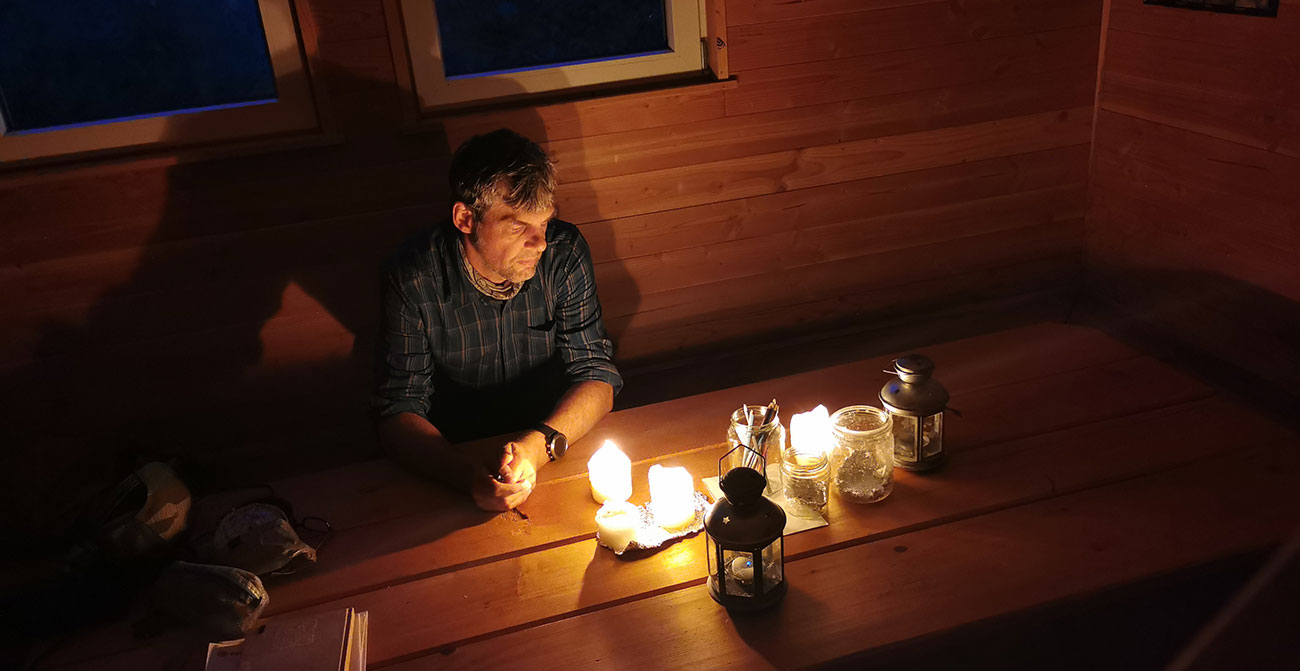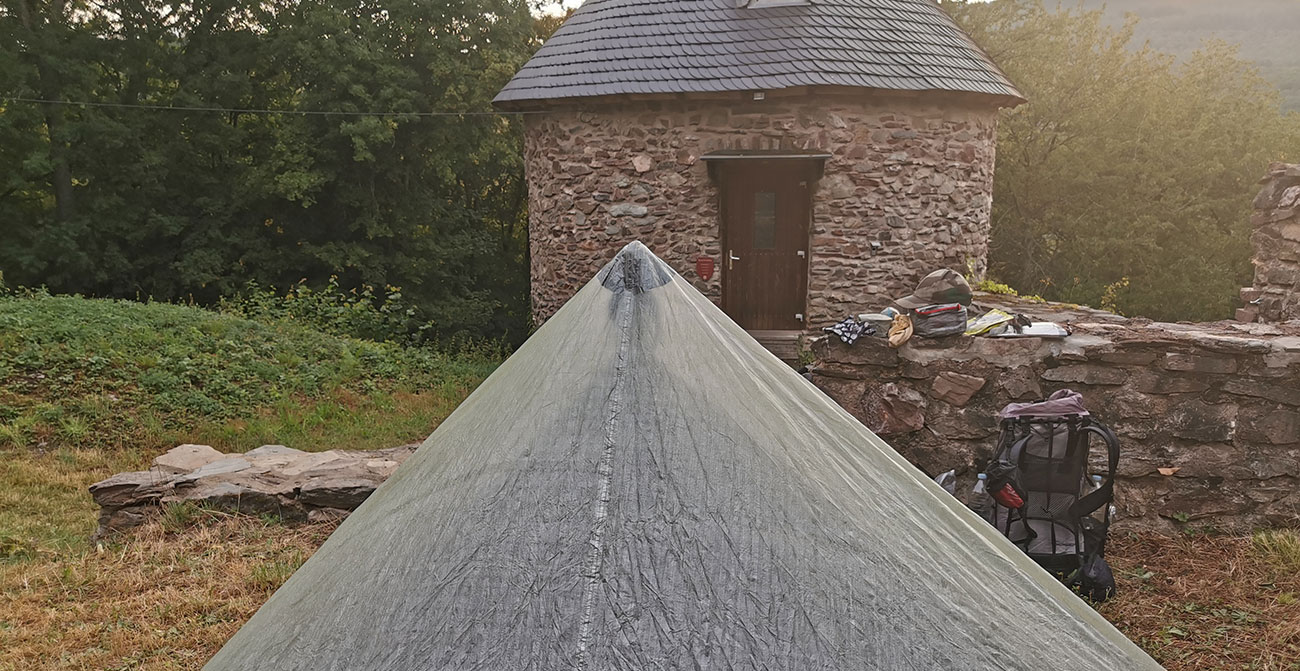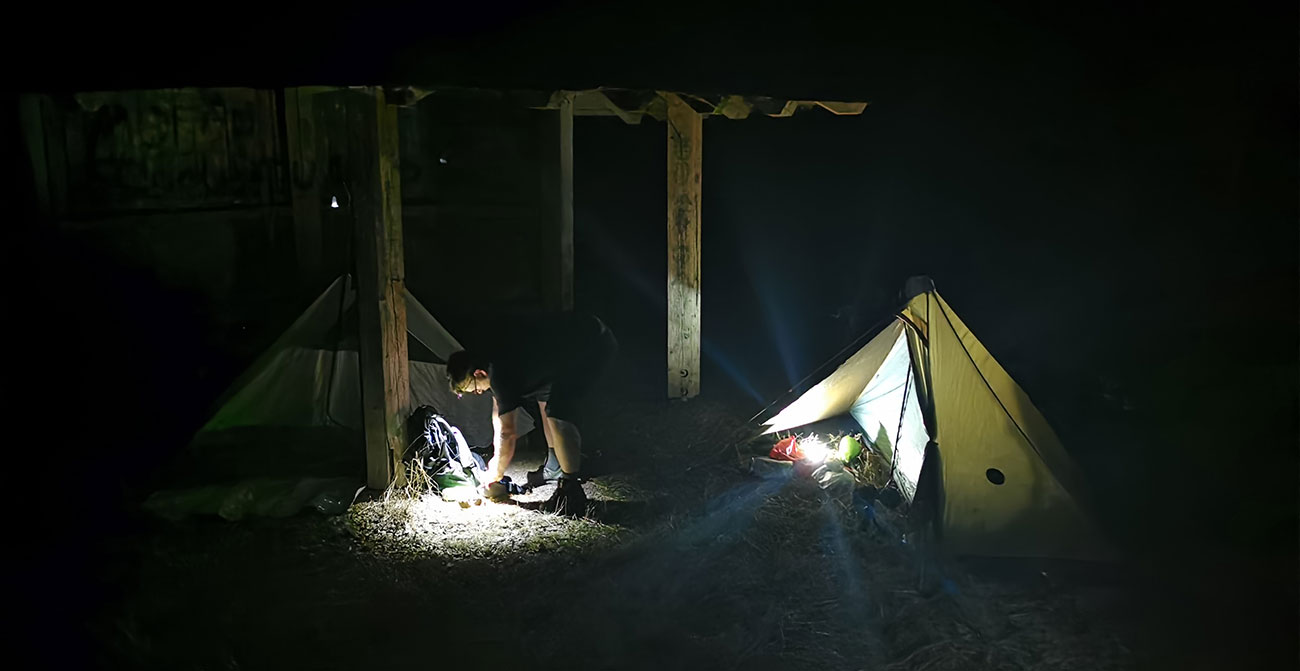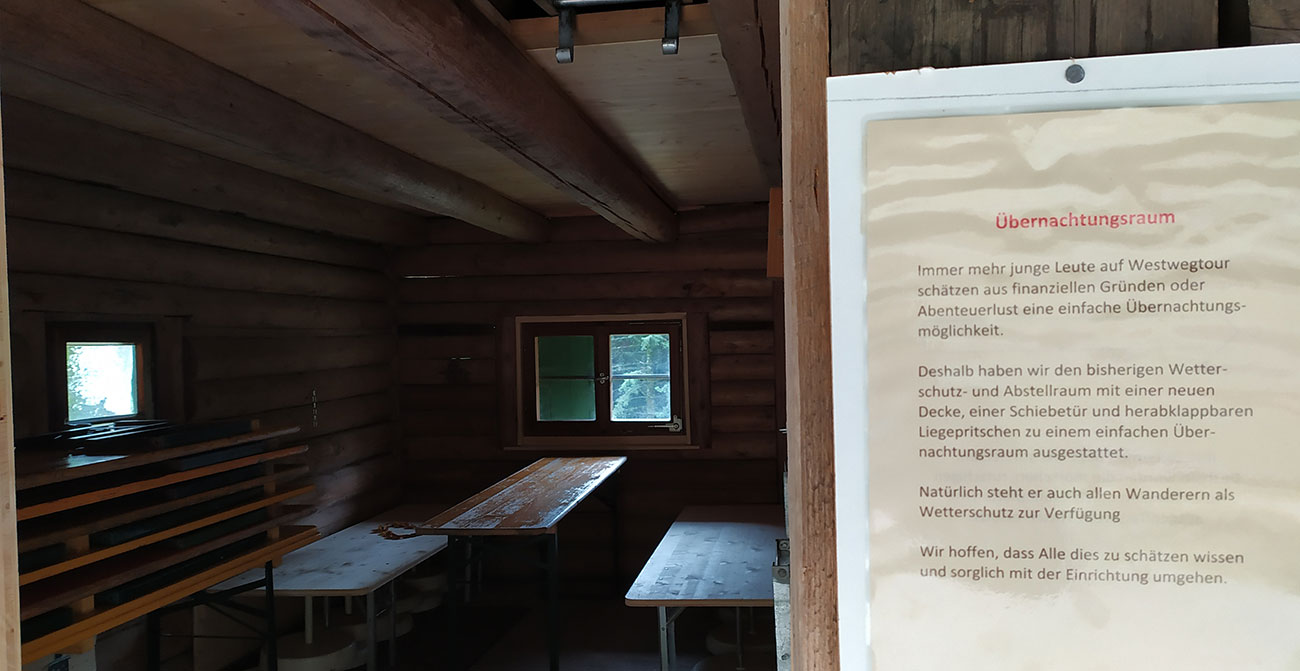Spending the night in refuges? Yes, sure.
“How do you do that with spending the night on the North South Trail? You’re not allowed to just pitch your tent like that in Germany.”
One of the most frequently asked questions about the NST and thus also proof that spending the night in nature is an important and big topic. Perhaps this very question, “Where to take the long-distance hiker on his journey?” was the reason why, to this day, not a single hiking association has realized a national long-distance hiking trail. The fact is, a long-distance hike lasts several months and it is completely out of the question to complete it exclusively with hotel or pension overnight stays. For most people this will not be financially and organizationally possible, besides, one chooses consciously the proximity to nature, the rhythm and the simplicity. A long-distance hike (thru-hike) cannot and should not be planned months in advance, every plan is discarded at the latest after the first unexpected weather changes.
What is the status quo in Germany?

So-called “wild camping” is an administrative offense in this country. Anyone caught can be fined, the amount of which varies from state to state. As a rule, not much will happen if you follow the rules of conduct that are self-evident for long-distance hikers. Exceptions are of course the nature reserves. In these protected areas, not only is “wild camping” prohibited, but even leaving the established hiking trails.
What are these rules of conduct?
▶ Never camp in nature reserves!
▶ Never make open fire!
▶ No noise or loud music!
▶ Do not leave trash behind!
▶ Do not gain access to private property!
▶ Leave the shelter as clean as possible than you found it!
Now, of course, the concerned citizen could rightly say: “Well, it’s forbidden, so please abide by it!” Many years one treated the problem or the topic exactly the same. The stupid is however, not always laws or regulations also make sense. The authorities, offices, nature conservation authorities and tourist associations had to recognize that with pure prohibitions the longing to find back a little to nature cannot be created from the world. The creation of legal trekking sites is a huge step in the right direction and, of course, a laudable admission that people are finally facing reality. People sleep in nature, whether they are allowed to or not. No ban in Germany changes anything about it. The trekking places or also nature camp places show however also, where there’s a will there’s a way. If the authorities had talked more with long-distance hikers and hiking guides in advance, these places and their booking methods could have been even better.

But the “foot is in the door” and the places are getting more and more every year. Thank you for that!
Meanwhile there are nature campsites in the Eifel, the Palatinate Forest, Black Forest, Soon Forest, Hunsrück-Hochwald, Steigerwald, Odenwald, Frankenwald, in the Spessart, in Schleswig-Holstein, in the Elbsandsteingebirge, in the Sauerland, and in the Kellerwald-Edersee National Park. Many of these trekking camps are also on the route of the NST. But in recent years, another thing has developed very positively:
Tolerating overnight stays in and around shelters!
We from the North South Trail Initiative are offensively campaigning for the toleration of overnight stays in and around shelters! Put an end to the fear of being caught. Overnight stays for non-motorized people passing through should be possible for a few hours in shelters.
What are shelters actually for? As the name suggests, they are primarily to provide shelter, protection from wind, rain, storms but also…from darkness. When long-distance hiking, nature dictates my daily routine, I go as far as I feel like, have strength or just light. Nothing is booked or planned in advance, so I often seek shelter from the dark and the night in these huts. I deliberately don’t use the word “camping” here, because lying in a shelter for a few hours has nothing, absolutely nothing to do with camping. A few hours sleep serve the recovery, before one moves on again quite early with the songs of the birds.
But here, too, much has changed in recent years. In most areas where the major established trails pass through, new cabins are being built that already incorporate sleeping areas or very wide benches for overnight camping. The most laudable example here is the Black Forest with its Westweg. Here, tolerating overnight stays in shelters has long been a reality; there are even occasional signs stating that overnight stays for hikers are expressly permitted there.
In this case also foresters, nature conservation authorities, tourist associations but also hunters have realized that it is better to let hikers sleep in a hut than, for example, near a high stand or, even worse, in the middle of the forest in a nature reserve. But there is also a peculiarity here….What happens if a hut is located in a nature reserve?
Basically, you should avoid nature reserves for an overnight stay. These areas have a purpose and were created for a reason. Any nature lover will be more than understanding. The problem is, however, that some long-distance hiking trails lead through very large nature reserves that you cannot cross on foot in a single day. The example of the North-South Trail would be the Heidschnuckenweg or the Siebengebirge. So how can you have a long-distance hiking trail through a large nature reserve on one side, but not worry about where the long-distance hikers should spend the night on the other side? For such rare cases, a legal trekking site on the edge of the NSGs would perhaps be an acceptable solution for all sides. The example of a camping site in Rhineland-Palatinate, in the middle of a strictly protected NSG, shows that this is possible. Under some conditions, an acceptable compromise has been reached, for all sides. I believe that most nature conservation authorities have now realized that the people who sleep a few hours in these huts are not the ones who leave the established hiking trails in protected areas and trample everything down, wantonly destroy or set fire to huts, riot, celebrate alcohol excesses or shit everything around the hut.


A model for the Löwenburg in the Siebengebirge? A legal trekking site in the middle of the nature reserve at Grimburg Castle Grimburg
Have I ever spent the night in a hut in an NSG? Probably yes, and of course I’m sorry about that in retrospect. Often you just do not know exactly whether one or the other hut is still in a protected area. Small plaques with the NSG symbol at the huts would be a great help and would remind the inconsiderate hiker but rather to move a bit further. Such a solution would certainly be quite unbureaucratic feasible. A code on the NST will be in the future to respect NSGs and only in absolute emergencies in such a refuge to spend the night. Furthermore, we will mark all shelters in our online directory that are located in a nature reserve and refer to them separately. Nevertheless, we continue to hope that there may eventually be a mutually acceptable solution. Let’s have a constructive dialogue in the future and hopefully find more solutions for long-distance hikers.
North South Trail 2022 Initiative.
Post a Comment
You must be logged in to post a comment.








